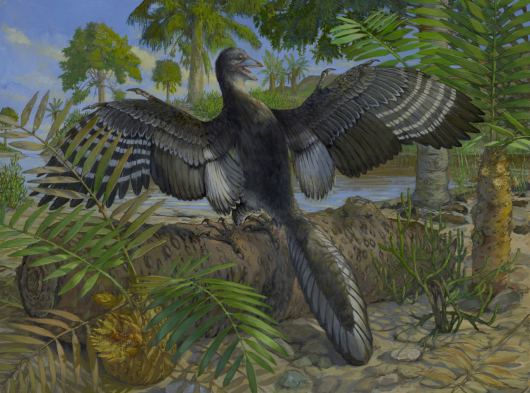New Archaeopteryx fossil sheds light on bird evolution


A team of researchers from China and the United States has shed new light on the ancient evolutionary transition from dinosaurs to birds, thanks to a remarkably well-preserved specimen of Archaeopteryx.
The pigeon-sized fossil, acquired by the Field Museum of Natural History in Chicago in 2022, represents the 14th known specimen of the prehistoric creature and is both the smallest and best-preserved to date. First discovered in Germany in 1861, Archaeopteryx dates back to the Late Jurassic Period, around 150 million years ago. It is considered a pivotal species in paleontology for displaying traits of both modern birds and non-avian dinosaurs.
According to the study, the specimen retains many bones in three dimensions and rare traces of soft tissue — a level of preservation that enabled researchers to conduct high-resolution CT scans and 3D reconstructions. These techniques revealed an almost completely intact skull, including the palatal region, which appears to be intermediate between that of troodontids — a group of bird-like theropod dinosaurs — and more evolved Cretaceous birds.

This intermediate anatomy is seen as a crucial stage in the shift from the rigid, immobile skulls of non-avian theropods to the lighter, more flexible skulls of birds.
The study also identified preserved soft tissues, including toe pads shaped similarly to those of modern ground-foraging birds, suggesting Archaeopteryx was adapted for walking. This supports the idea that it may have led a mixed lifestyle, spending time on the ground and possibly in trees — indicating greater ecological flexibility than previously understood.
- China's top political advisor meets delegation of A Just Russia party
- Pooled efforts expected to deepen reforms in Hong Kong with new legislature elected
- Nanfeng mandarins of Jiangxi are going global
- Former senior official of Guangxi expelled from Party
- Former CPPCC official Bi Jingquan dismissed from office
- Man detained for allegedly hugging unfamiliar girl in Guangdong park



































